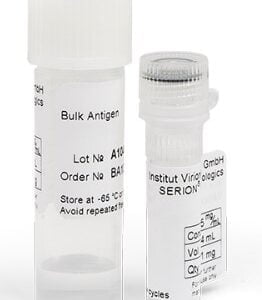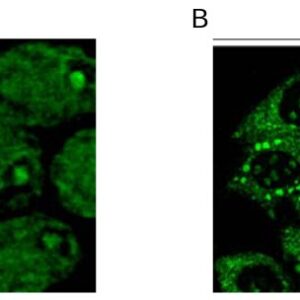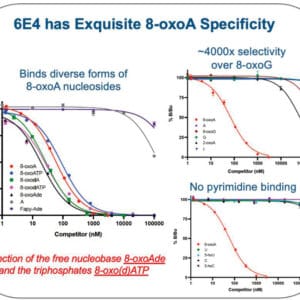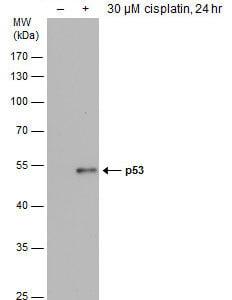Showing 1–10 of 34 results
Oxidative stress
Our catalog of antibodies includes a comprehensive range of products tailored to address various aspects of oxidative stress.
We are excited to offer a novel, high-value antibody, the mouse monoclonal antibody (6E4), which targets 8-oxoA, a C8-oxidized adenine lesion arising in DNA, RNA, and free nucleosides. 6E4 exhibits exquisite selectivity for 8-oxoA over a chemically diverse mixture of native, methylated, and oxidized nucleoside antigens, including 8-oxoG, 2-oxoA, m6A, and 5-hoU. It specifically senses 8-oxoA in nucleoside triphosphates (8-oxoATP) and DNA/RNA oligonucleotides containing a single 8-oxoA. Importantly, 6E4 discerns 8-oxoA in double-stranded DNA/RNA antigens, whether paired correctly or base mismatched. This antibody is well-suited for a broad range of immunodetection applications in nucleic acid quality control and sequencing.
For enzymatic antioxidant markers, we offer antibodies that target crucial enzymes like superoxide dismutase, catalase, and glutathione peroxidase, which play pivotal roles in neutralizing reactive oxygen species. Inflammatory markers linked to oxidative stress are well-represented with antibodies against cytokines and chemokines that mediate the inflammatory response. Our selection also encompasses non-enzymatic antioxidant markers, such as those targeting vitamins and thiols that contribute to the cellular antioxidant defense. We provide antibodies for oxidative damage markers, including those that detect protein carbonyls and lipid peroxidation products, indicating cellular damage. Redox signaling markers are crucial for understanding cellular redox balance, and our antibodies against key signaling molecules help elucidate these pathways. Additionally, we offer mitochondrial markers that highlight the role of mitochondria in oxidative stress and cellular metabolism. Our catalog includes antibodies for additional cellular markers involved in oxidative stress responses and signal transduction pathways, providing insights into cellular communication and regulatory mechanisms. Furthermore, we offer small molecules of oxidative stress to study their roles in various biological processes.
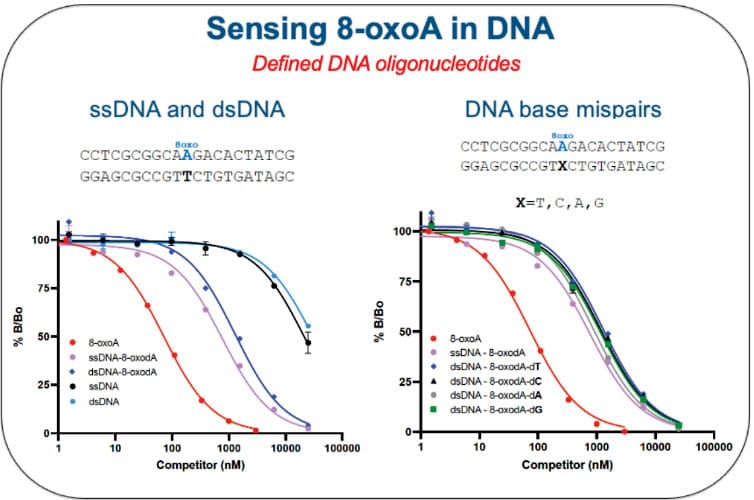
ELISA with antibody [1002] : Selectivity and Specificity of 6E4 in DNA:
Binds 8-oxoA in single and double stranded DNA
Recognizes 8-oxoA in all DNA base mispairs
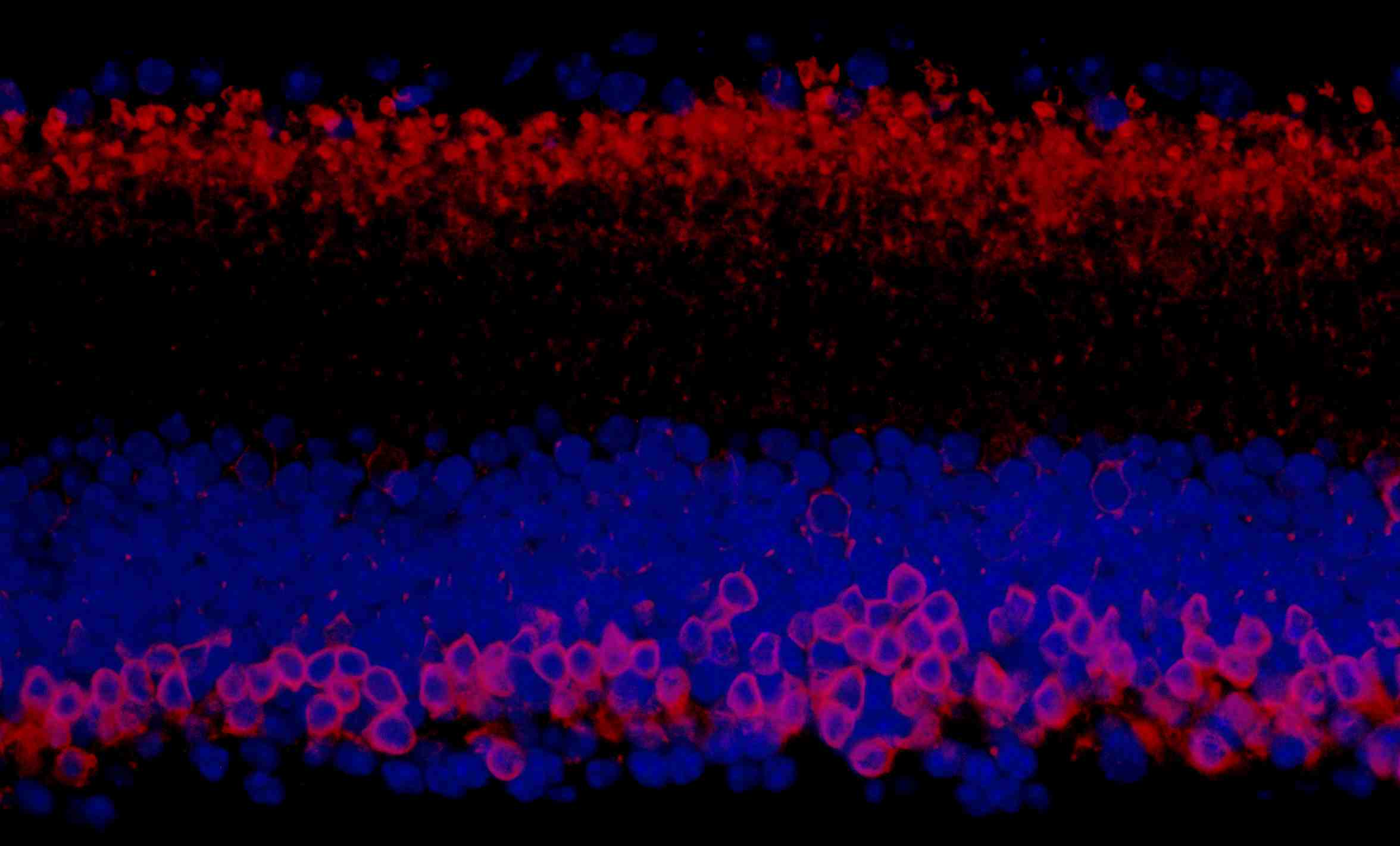
IHC with antibody [1035] : Detection of mouse PKC-alpha by immunohistochemistry.
Sample: FFPE section of mouse retina. Antibody: Affinity purified rabbit anti-PKC-alpha (#1035) used at a dilution of 1:100 (2µg/ml). Detection: Red-fluorescent goat anti-rabbit IgG-heavy and light chain cross-adsorbed Antibody DyLight-594 Conjugated used at a dilution of 1:100. Counterstain: DAPI (blue)

WB with antibody [1038] : Detection of human Sirt1 by western blot and immunoprecipitation.
Samples: Whole cell lysate from HeLa (5, 15 and 50 µg for WB; 1 mg for IP, 20% of IP loaded) and HEK293T (T; 50 µg) cells. Antibodies: Affinity purified rabbit anti-Sirt1 antibody (#1038) used for WB at 0.04 µg/ml (A) and 1 µg/ml (B) and used for IP at 3 µg/mg lysate. Sirt1 was also immunoprecipitated using rabbit anti-Sirt1 antibodies. Detection: Chemiluminescence with exposure times of 10 seconds (A) and 30 seconds (B).

